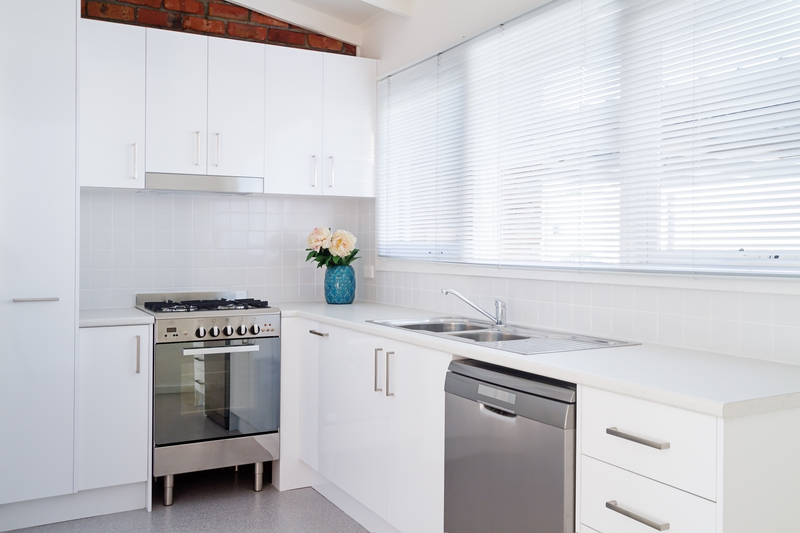Step-by-Step Instructions for Moving Your Bed and Mattress
Relocating your household can be overwhelming, especially when it comes to moving large furniture pieces. Your bed and mattress are among the bulkiest and most vital items you'll transport, so it's crucial to handle them with care and strategy. This comprehensive guide will walk you through step-by-step instructions for moving your bed and mattress. Proper techniques not only protect your investment but also make your move safer and more efficient.

Why Properly Moving Your Bed and Mattress Matters
- Prevent Damage: Mattresses and beds are expensive. Incorrect handling can lead to structural damage, tears, or stains.
- Hygiene: Mattresses can pick up dirt, moisture, and bacteria during a move. Proper preparation ensures your sleeping surface remains clean.
- Safety: Beds and mattresses are heavy and unwieldy. Using the right techniques reduces the risk of injury or accidents.
- Efficiency: Good organization saves you time and hassle, both on moving day and when setting up in your new home.
Essential Supplies for Moving Your Bed and Mattress
Gathering the right supplies before you move your mattress and bed frame is essential for a smooth process. Here's what you'll need:
- Mattress bag or cover
- Furniture blankets or moving pads
- Plastic wrap or stretch wrap
- Tool kit (screwdrivers, Allen wrenches, pliers)
- Furniture dolly or hand truck
- Moving straps
- Tape and markers (for labeling hardware)
- Ziplock bags (for screws and hardware)
- Helpers (at least one other person)
Step 1: Prepare Your Bed and Mattress for Moving
Strip the Bedding
- Remove all bedding, pillows, and any decorative items from the bed.
- Wash or pack the bedding in a clean bag or moving box, label accordingly.
Clean Your Mattress and Bed Frame
- Vacuum the mattress to remove dust, hair, and debris.
- Wipe down the bed frame with a gentle cleaner, especially if it's wooden or upholstered.
- Let everything dry completely to prevent mold and mildew during transport.
Measure Doorways and Hallways
- Use a tape measure to ensure your mattress and bed components fit through doorways and tight spaces.
- If needed, remove doors from hinges to create extra room.
Step 2: Disassemble the Bed Frame
Your bed frame will be far easier and safer to move when broken down into manageable pieces. Here's how:
- Review Instructions: Consult the manufacturer's manual for your bed frame. If you've discarded the paper manual, check online for a PDF version by searching the model name.
- Remove Slats and Supports: Carefully lift out slats or any movable support boards. Stack them neatly and wrap them in a blanket or moving pad.
- Unscrew Headboard and Footboard: Use the correct tool (Phillips, flat-head screwdriver or Allen wrench) to detach the boards from the frame. Place all screws and bolts in a labeled ziplock bag for easy reassembly.
- Disassemble Side Rails: If there are side rails or a center beam, separate them from the headboard and footboard.
- Wrap Components: Cover each bed part with moving blankets and secure with packing tape or plastic wrap. This step prevents scratches and dents.
Pro-Tip:
Take photos of each step: Use your smartphone to snap quick photos during disassembly. These "before" images will help guide you during reassembly at your new home.
Step 3: Pack and Protect Your Mattress
- Bag Your Mattress: Slide your mattress into a high-quality mattress bag. If you have a memory foam or latex mattress, choose a reinforced bag to prevent rips. This keeps out dust, moisture, and bugs.
- Seal the Bag: Tape the bag closed to minimize exposure.
- Add Extra Protection: For long-distance moves, wrap the mattress in a furniture blanket before bagging. This is especially useful for expensive or delicate mattresses.
- Never Bend Your Mattress: Avoid folding or bending spring and hybrid mattresses. Only certain foam mattresses are designed to be compressed--check your manufacturer's guidelines first.
Step 4: Moving the Mattress
- Get Help: Moving a mattress is a two-person job. Mattresses are awkward to grip and can be heavy, so never attempt this alone.
- Use Moving Straps: Moving straps add extra control and prevent strain on your back. Secure the straps under the mattress for easy lifting.
- Lifting Techniques: Lift with your knees, not your back. Communicate with your partner before lifting.
- Position on Dolly: If moving a king or queen mattress, balance it on a furniture dolly or cart for easy navigation through hallways and into the moving truck.
Tip:
Take breaks as needed. A brief pause every 10-15 minutes helps minimize fatigue and reduce accidents.
Step 5: Moving the Bed Frame Components
- Move Smaller Pieces First: Carry slats and rails before handling heavier headboards or footboards.
- Team Up: Heavy or oversized parts (especially wooden or upholstered headboards) should be carried by two people.
- Use a Dolly: If your components are especially heavy, load them onto a dolly for transportation to the moving truck.
- Keep Hardware Stowed: Double-check all screws, nuts, and bolts are secure in their labeled bag. Tape the bag to one of the frame parts for easy retrieval.
Step 6: Loading Your Mattress and Bed Frame onto the Moving Truck
Loading the Mattress
- Stand Upright: Most moving professionals recommend loading your mattress standing upright on its side against the truck wall. This saves floor space and reduces the risk of crushing.
- Secure in Place: Use straps to anchor your mattress, preventing it from sliding during transit.
- Avoid Placing Heavy Items on Top: Never stack boxes or furniture atop the mattress; doing so can cause warping or permanent indentations.
Loading the Bed Frame
- Stack Carefully: Lean bed rails, slats, headboard, and footboard together, wrapping them gently in blankets for protection.
- Position Hardware Bag: Tape the hardware bag securely to a bed component or store in a clearly marked box.
Step 7: Unloading and Reassembling Your Bed and Mattress
Unload with Caution
- Take Your Time: Carefully unload each bed frame component. Use moving blankets to slide pieces if necessary to avoid scratches on floors.
- Move Mattress with Helpers: Again, work with a partner to maneuver your mattress safely into your new bedroom.
Reassemble Your Bed Frame
- Follow Your Manual or Photos: Refer to disassembly photos or manufacturer's guidelines for accurate reassembly.
- Lay Out Hardware: Empty the labeled hardware bag and sort the screws, bolts, and nuts before starting.
- Start with Frame: Assemble main frame and supports first, then attach slats, headboard, and footboard.
- Check for Stability: Tighten all screws and bolts to ensure the frame is solid before placing your mattress.
Set Up Mattress
- Remove Protective Bag: Take off the mattress bag and discard or store for future moves.
- Check for Odors or Damage: Ensure the mattress remained clean and undamaged during the move.
- Let Mattress Air Out: If possible, give it a couple of hours to air out before placing bedding.
- Make Your Bed: Put on fresh linens and enjoy your bed in your new home!
Special Tips for Moving Different Mattress Types
- Memory Foam Mattresses: Avoid bending or folding these mattresses unless the manufacturer states they are roll-pack eligible.
- Innerspring Mattresses: Keep upright; folding can break the springs and edge supports.
- Hybrid Mattresses: Handle with extra care. Most should not be flexed or bent significantly.
- Latex Mattresses: Heavy and floppy. Always carry with at least 2 people, bagged for protection.
- Adjustable Bed Frames: Consult your manufacturer and refer to specific disassembly instructions. Electronics and motors must be handled delicately.
Frequently Asked Questions About Moving Your Bed and Mattress
Can I move a mattress by myself?
It's strongly discouraged. Mattresses are heavy and unwieldy. Solo moves risk injury or damage to both you and your mattress. Always work with at least one helper.
Should I use professional movers for my bed and mattress?
Professional movers are trained to move large, awkward items like beds and mattresses. If you have back or mobility issues, a very large bed, or need to move down several flights of stairs, hiring professionals may be a wise investment.
How do I keep my mattress clean during a move?
Use a mattress bag or thick plastic wrap and double up with a furniture blanket for extra protection. Never place your mattress directly on the ground.
How should I move a mattress in a car?
Most mattresses won't fit inside a standard car. In rare cases, you might fit a twin or full-size mattress in a large SUV or minivan (with seats folded down). Always secure the mattress to prevent movement. Avoid placing mattresses on the roof unless securely tied and it's legal in your area.
What's the best way to store a mattress between moves?
Store the mattress flat and fully wrapped in a clean, dry environment. Avoid stacking heavy items on top to maintain its shape.

Additional Tips for a Successful Move
- Label All Parts: Use masking tape and a marker to label each component of your bed frame for easy assembly.
- Double Wrap for Rainy Weather: If moving in wet conditions, double up on plastic coverings for both the mattress and frame to prevent water damage.
- Plan Your Route: Clear hallways, stairs, and entryways before moving to avoid tripping hazards.
- Move Early in the Day: To avoid heat exhaustion and give yourself plenty of daylight for setup.
- Protect Floors and Walls: Place moving blankets over corners, narrow hallways, and door frames to prevent accidental scrapes.
Conclusion: The Right Way to Move Your Bed and Mattress
Moving your bed and mattress doesn't have to be a stressful or risky ordeal. With careful preparation, the right supplies, and strategic teamwork, you can relocate your sleeping essentials safely and efficiently. Whether you're going across town or across the country, these step-by-step instructions for moving your bed and mattress will help ensure your journey is smooth and your investment is protected.
Remember: When in doubt, consult your mattress and bed frame manufacturer for specific moving recommendations, and consider enlisting professional help for complex or heavy beds. Sleep well in your new home!



